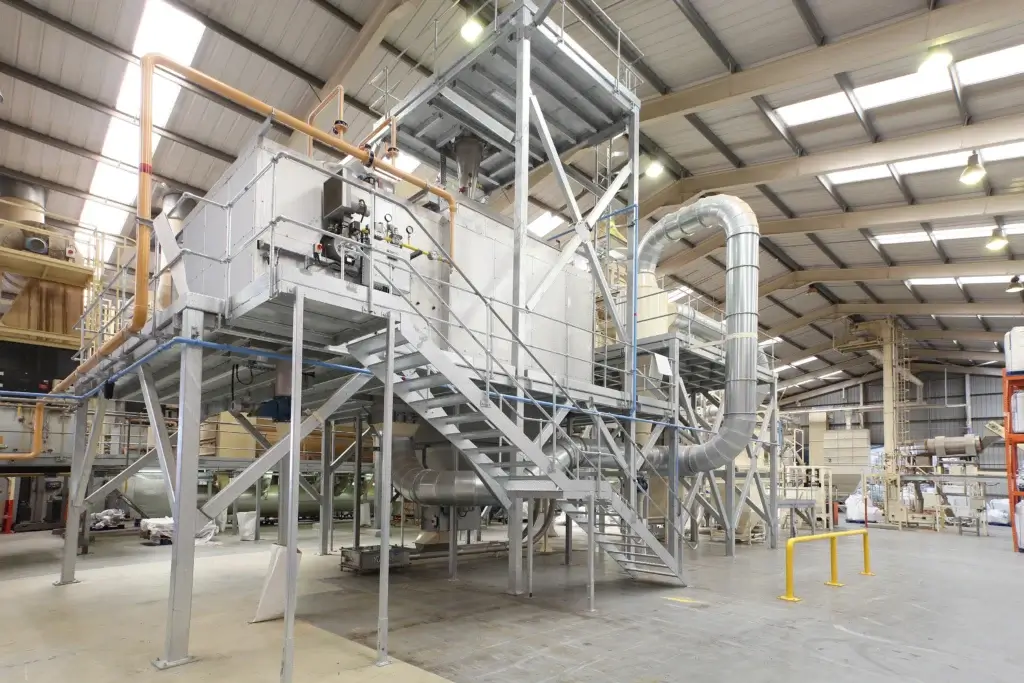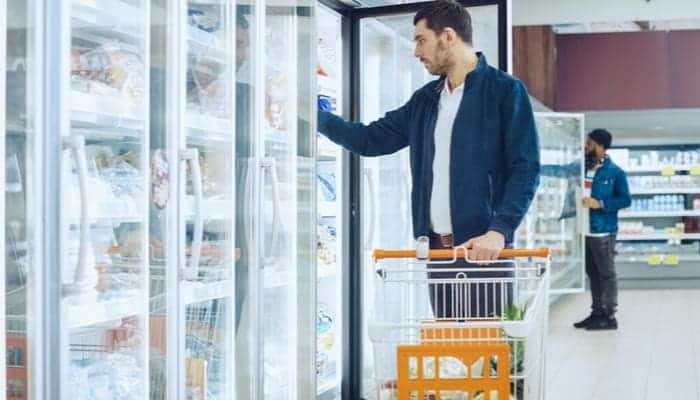Dive into the realm of processed foods, where culinary innovation meets consumer convenience. But what are processed foods? In a world brimming with diverse dietary options, understanding this topic becomes crucial. From the intricacies of preparation to the advanced technologies shaping the industry, this exploration delves into the evolution of processed foods. Join us on a journey through the nuances of modern gastronomy and the integral role played by conveyor technologies.
What Are Processed Foods?
Processed foods encompass a wide range, from convenience items like washed and packaged vegetables to those with added ingredients like oils, sweeteners, and preservatives. Some undergo processing for safety, such as pasteurizing milk, while others are fortified with nutrients. Even foods labeled “organic” or “natural” can undergo varying degrees of processing. Overall, processed foods are altered during preparation to enhance taste, safety, and shelf life.
From minimally processed food such as a salad mix or a bag of frozen fruits and vegetables to ultra-processed foods like instant meals or snack foods, processed foods make up a huge share of most people’s diets. To put it simply, processed food is any food that has been altered somehow during its preparation process. And almost all types of processed food have seen rapid growth in global demand.
The Transformative Impact of Global Middle-Class Growth on Processed Food Consumption
The overall increase in middle-class income growth and higher levels of urbanization worldwide have also driven a steady rise in processed foods sales. The global middle class has increased from around 1.8 billion people in 2010 to approximately 3.2 billion in 2020.
Similarly, households with an annual income greater than $20,000 per year have increased by 54% during that same period. In terms of the processed food industry, a larger middle class also translates to more consumption. It is estimated that, with a compound annual growth rate (CAGR) of 4.0%, the processed food market will go from $53.2 billion in 2019 to $64.7 billion by 2024. Also, the industry is embracing innovative technologies, such as tubular conveyor systems and advanced cleaning conveyor belts, so it becomes imperative to meet the escalating demands of this expanding market.
The Diverse Facets of Processing – Enhancing Flavor, Nutrition, and Convenience
Many processed foods have various ingredients added, such as oils, sweeteners, coloring agents, and preservatives. Some are also fortified with nutrients like vitamins, minerals, or dietary fiber. In contrast, others are only processed for convenience, such as being washed, chopped, and packaged for extended shelf life.
Processing in the form of milk pasteurizing, vacuum-packing meats, or canning fruits and vegetables can help prevent food spoilage and increase food safety. It should also be mentioned that even foods labeled as “organic” or “natural” can be processed to various degrees.

The Benefits of Processed Foods
The processing of food offers numerous advantages, including preservation, toxin elimination, enhanced food uniformity, and efficient distribution. Moreover, food processing plays a crucial role in making highly perishable items safe for consumption by deactivating harmful microorganisms. It’s evident that contemporary supermarkets and long-distance voyages heavily rely on advanced food processing techniques.
Processed foods, being less prone to spoilage compared to fresh counterparts, prove to be more suitable for transportation over extended distances. Innovations in conveyor solutions, championed by leading conveyor systems manufacturers, contribute significantly to streamlining the food processing and distribution chain. When they first appeared, some types of processed foods helped alleviate food shortages and improved the overall nutrition of the population in certain parts of the world.
As mentioned, food processing can also help reduce the incidence of various foodborne diseases. Raw foods, particularly meats, are far more likely to harbor dangerous pathogens, like Salmonella, capable of causing severe illness.
Processed Foods and the Evolution of Modern Diets
It’s also important to keep in mind that today’s varied diet is only possible thanks largely to processed food. Transporting exotic foods and eliminating a lot of manual labor have provided the modern consumer with easy access to an incredibly diverse array of food types. Likewise, processing has also greatly improved the taste of the food we eat.
The mass production of food is significantly more cost-effective than the individual production of each meal from raw ingredients. As such, there is enormous profit potential for processed food manufacturers and suppliers. However, when it comes to the individual consumer, the most significant advantage is convenience, as processed food has freed many people from spending large amounts of time preserving and cooking raw ingredients and other unprocessed foods. This increase in free time has allowed many to focus their lifestyle on areas other than food procurement and preparation.
Revolutionizing Efficiency With Tubular Conveyor Engineering and Expert Installation Supervision
Amidst these advancements, the implementation of cutting-edge technologies, such as the innovative tubular conveying system or traditional conveyor belt system, plays a crucial role. This innovative automated conveyor system ensures the seamless transport of materials, contributing to the efficiency of contemporary food processing. Additionally, the importance of conveyor installation supervision cannot be overstated, as it ensures the proper setup and functioning of these systems, optimizing their performance and reliability.
Contemporary food processing has enhanced the quality of life for individuals with allergies, diabetes, and those with dietary restrictions. Certain processed foods go a step further by supplementing additional nutrients, such as dietary fiber, vitamins, and minerals, which might be lacking in locally available foods.
The Importance of Food Processing
The primary purpose of food processing is to transform agricultural products into food. It may include grain grinding and turning it into raw flour, home cooking, or even more complex industrial methods to create convenience foods. The same principle applies when transforming one type of food into another, like sunflower seeds into oil. Some methods will play crucial roles in increasing food preservation and reducing food waste.
In other words, food processing helps reduce the overall environmental impact of agriculture while also improving food security. As mentioned earlier, processed foods are not only microwavable or ready-to-eat meals. They are all types of food that underwent some form of change during preparation. As such, processing can be even as basic as drying, canning, freezing, or baking.
It is crucial to dispel the misconception that all processed foods are unhealthy, as even those containing higher levels of salt, sugar, or saturated fats serve diverse dietary needs. In essence, the development and implementation of manufacturing conveyor systems underscore the multifaceted nature of food processing, highlighting its role in creating a diverse and sustainable food landscape.

The Three Stages of Food Processing
Learn all about the stages that transform raw agricultural products into the diverse array of foods we enjoy daily. There are different levels of processing food, going from minimally processed food to heavily processed foods. These three levels are as follows:
Primary Stage
The initial stage of food processing involves transforming agricultural products, such as raw wheat, corn kernels, and livestock, into consumable items. This encompasses various processes, including drying, winnowing, threshing, milling, shelling, and butchering, among others. Activities like deboning and meat cutting, canning fruits and vegetables, smoking fish, and pasteurizing milk also fall within this category.
Ensuring food safety and extending shelf life are critical aspects at this stage, given the widespread use of processed foods. To mitigate risks, commercial food processing employs control systems like Hazard Analysis and Critical Control Points (HACCP) and Failure Mode and Effects Analysis (FMEA). State-of-the-art cable and tube conveyor systems are also utilized to minimize cross-contamination, offering additional benefits such as reduced food residue trapping and limited direct contact with food.
Secondary Stage
Cooking serves as the predominant form of secondary-stage food processing, involving the transformation of various ready-to-use ingredients into consumable items. Additionally, secondary-stage processing extends to activities like bread baking, winemaking, and beer brewing. This category also encompasses cheese and sausage making. The integration of advanced technologies such as the belt conveyor system and automatic conveyor system further streamlines these processes, contributing to the efficiency and automation of secondary-stage food processing.
Tertiary Stage
While most types of food humans eat are being processed to varying degrees, it’s typically the tertiary food processing commonly called “processed food.” These will include the so-called processed foods like breakfast cereal, frozen pizza, snack foods, TV dinners, airline meals, and more. The seamless flow of these processed items within the food industry is often facilitated by industrial conveyor systems and conveyor belt systems, ensuring efficient and reliable transportation throughout the tertiary food processing stages.
Elevating Food Safety and Efficiency with Cablevey’s Tubular Drag Cable and Disc Systems
Regardless of the processing level, food manufacturers will need to pay close attention to food safety standards while keeping their bottom line in mind. One of the most significant issues is in terms of food contamination. Luckily, however, Cablevey is one of the best tubular and belt conveyor manufacturers with top-notch handling solutions for your products.
Cablevey tubular drag cable and disc systems are designed with enclosed and clean features, incorporating brushes, urethane disks, and air knives to minimize material breakage. These systems prioritize maintaining the quality of the final product by preventing breakage. Additionally, they safeguard the integrity of processed food blends containing multiple components in the mix.
In addition, tubular drag cable and disc systems can move food material vertically, horizontally, around corners, and at different angles, with a speed of around 42.4 m3/h. Fewer moving components and fewer frictions mean more system uptime, while removable parts and equipment make for easy cleaning and maintenance. Cable systems also run on 7.5hp or less motors, which results in lower energy costs and an increased bottom line for the food manufacturer.

Partner With Cablevey Conveyors and Experience the Ease of Conveying
The comprehensive system, encompassing materials and parts, is available in various sizes tailored to meet the unique layout and requirements of each facility. It incorporates a complete array of inlets, transfer systems, and cleaning equipment. Cablevey’s tubular cable conveyors guarantee thorough handling of food materials from start to finish, facilitated by their high hygienic standards, low horsepower requirements, and straightforward maintenance procedures. Contact us today and experience all the benefits of Cablevey’s automated conveyor systems in your manufacturing process.






